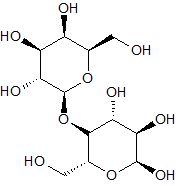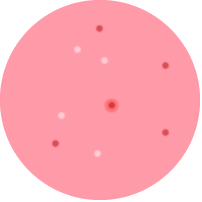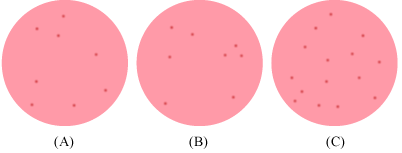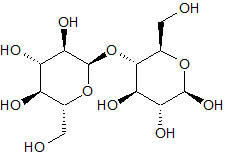P621
MacConkey agar is selective and differential for Gram negative enteric bacteria. It contains bile salts and crystal violet which inhibit the growth of Gram positive organisms. MacConkey agar can also be used to distinguish lactose and non-lactose fermenting bacteria. Bacteria that internalize and ferment lactose acidify the local environment. Neutral red, a pH indicator in MacConkey, makes the colonies appear pink at pH values lower than 6.8. Lactose fermenters include E. coli, Klebsiella, and Enterobacter. Non-lactose fermenting colonies appear white and include Salmonella, Proteus, Yersina, and Shigella.
Three additional colony morphologies may appear on MacConkey plates. First, strong lactose fermenters produce copious amounts of acid which causes the bile salts to precipitate and these pink colonies are surrounded by a hazy pink halo. Second, colonies of slow lactose fermenters, such as Citrobacter and Serretia, have a pink center surrounded by a white rim. Third, Proteus swarms across MacConkey plates containing sodium chloride.

Figure 1. Structure of lactose.
In an experiment, a fecal sample from a patient was plated on MacConkey agar and grown at in an incubator.

Figure 2. Image of the MacConkey agar plate after 24 hours of incubation with patient fecal sample.
In a subsequent experiment, a novel bacterium was plated on MacConkey agar to which sucrose, glucose, and mannose were added on different plates. The plates were then incubated for 24 hours at 37 °C.

Figure 3. Growth of novel bacteria on MacConkey agar plates after 24 hours at 37 °C. Plate A contained maltose, plate B contained starch, and plate C contained mannose.

Figure 4. Structure of maltose.
.
Find an error? Take a screenshot, email it to us at error@mytestingsolution.com, and we’ll send you $3!
